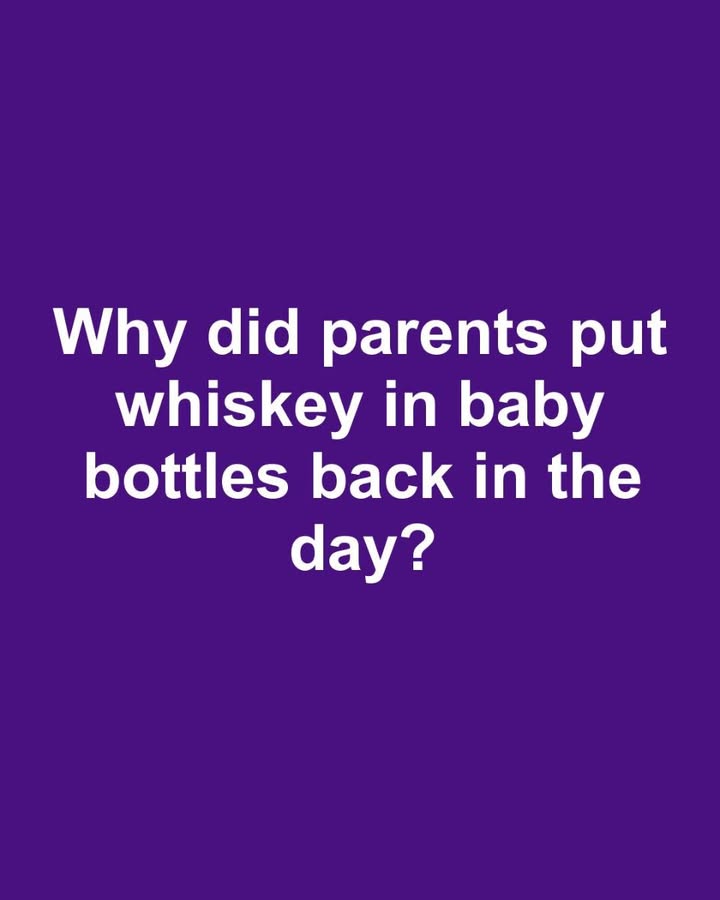I had no clue
Holly Owens
Contributing Writer
Like to see more from Tips for the Home
Print this recipe
Throughout history, parenting practices have evolved significantly, often reflecting the cultural, social, and medical understanding of the time. In the past, parents relied on a variety of methods to care for their children, some of which may seem unconventional or even alarming by today’s standards. One such practice was the use of whiskey in baby bottles, a method employed by some parents to soothe their infants. This article explores the historical context and reasoning behind this practice, shedding light on the cultural and medical beliefs that influenced parenting decisions in earlier times.
The Cultural Context of Whiskey Use in Childcare
In many cultures, whiskey and other forms of alcohol have long been regarded as medicinal substances. During the 19th and early 20th centuries, whiskey was commonly used in households not only as a beverage but also as a remedy for various ailments. The use of whiskey in childcare can be traced back to these cultural practices, where alcohol was seen as a panacea for health issues ranging from colds to digestive problems. In communities where access to modern medicine was limited, whiskey was often one of the few available options for parents seeking to alleviate their children’s discomfort.
Understanding the Perceived Benefits of Whiskey for Babies
Parents who used whiskey in baby bottles believed it offered several benefits. Primarily, whiskey was thought to have a calming effect, helping to soothe fussy or colicky babies. The alcohol content was believed to induce sleep, providing much-needed rest for both the infant and the parents. Additionally, whiskey was sometimes used as a remedy for teething pain, as it was thought to numb the gums and reduce discomfort. These perceived benefits made whiskey an attractive option for parents looking for quick and effective solutions to common childhood issues.
Medical Advice and Common Beliefs of the Time
During the era when whiskey was used in baby bottles, medical advice was not as standardized or scientifically grounded as it is today. Many doctors and medical practitioners of the time endorsed the use of whiskey and other home remedies for treating various ailments. The lack of rigorous scientific research and the limited understanding of child development and pharmacology contributed to the acceptance of such practices. Furthermore, the medical community often relied on anecdotal evidence and traditional knowledge, which reinforced the belief in whiskey’s efficacy as a treatment for infants.
The Role of Whiskey in Soothing and Teething Remedies
Teething is a challenging phase for both infants and parents, characterized by irritability and discomfort. In the absence of modern teething gels and pain relievers, parents turned to whiskey as a natural anesthetic. By rubbing a small amount of whiskey on the baby’s gums or adding it to a bottle, parents hoped to alleviate the pain and help their child sleep. This practice was passed down through generations, becoming a common household remedy despite the potential risks associated with alcohol consumption in infants.
Societal Norms and the Acceptance of Alcohol in Childcare
The use of whiskey in childcare was also influenced by societal norms regarding alcohol consumption. In many communities, alcohol was an integral part of social life and was not viewed with the same caution as it is today. The absence of strict regulations and the widespread availability of whiskey made it a convenient choice for parents. Moreover, the social acceptance of alcohol use in adults likely
